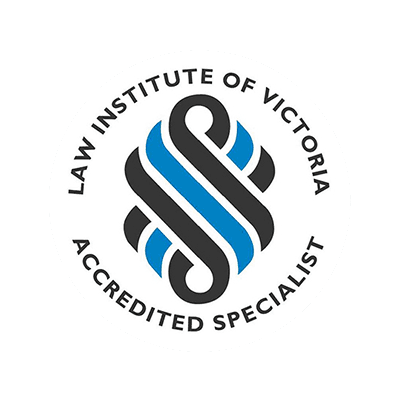Guidelines for listing on international stock exchanges
Initial Public Offerings – IPO Guidelines – Australia
1. Regulatory Background
1.1 Overview of Regulatory
The Corporations Act 2001 (“Act”) regulates the requirements for listing on the ASX. The Act prohibits operation of a financial market without an Australian Market Licence, and ASX as a licensee must comply with provisions found in Division 3 of Part 7.2 of the Act.
1.2 Regulatory Entities
The regulatory entities involved in the listing application process include:
- ASX;
- The Australian Securities & Investments Commission (“ASIC”), and
- The Takeovers Panel
1.3 Required Approvals
ASX will approve and list securities once an applicant meets all eligibility and other requirements.
2. Listing Criteria
2.1 Suitability of Listing Applicant
A company or fund (“applicant”) seeking to list on ASX must comply with the ASX Listing Rules. ASX Listing Rule 1 sets out the main requirements for an applicant seeking listing; however, there will be further conditions that an applicant must meet for admission. Most entities listed on ASX are companies established under the Act, but many funds are also listed. It is possible for applicant outside of Australia to list, subject to certain requirements.
2.2 Track Record Requirement
An applicant seeking to list on ASX must meet either the Profits or Assets Test.
The applicant must:
- Have been operating successfully for a number of years;
- Be a going concern or a successor of a going concern;
- Have conducted the same main business activity for the past three full financial years;
- Provide audited financial records for this period to ASX;
- Have an aggregated profit from continuing activities of AUD$1M over the past three years, and
- Provide assurance from the directors that profit from continuing operations for 14 months before applying for admission exceed AUD$400,000.00.
Alternatively, where there is a newly established company or fund seeking admission, the applicant must meet the assets test.
The applicant must have:
- Net tangible assets of at least AUD$2M after deducting the float costs or a market capitalisation of AUD$10M, and
- Working capital of at least AUD$1.5M, which requires confirmation as being sufficient to carry out its stated objectives, and
- Less than half of the applicant’s total tangible assets must be in cash (after raising funds from the float), or if this is not the case the applicant must pass the ‘commitments test’. This test ensures that at least half of the cash in this scenario is spent in a way that is consistent with the business objective of the applicant.
2.3 Minimum Market Capitalisation
At the time of admission, an applicant must have net tangible assets of AUD$2M after deducting costs of fund raising or a minimum market capitalisation of AUD$10M.
2.4 Sufficiency of Working Capital
The applicant seeking listing must have working capital of at least AUD$1.5M. The directors of the applicant must confirm that the applicant has enough working capital to carry out its business objectives.
2.5 Eligibility for Electronic Settlement
ASX’s trading operations are entirely paperless. Securities must be available for electronic settlement.
3. Overseas Companies
If a foreign company meets the admission requirements for companies or funds generally, or by successfully seeking ASX foreign exempt listing under Listing Rule 1.11, ASX may list the foreign applicant. A company listed on a recognized overseas stock exchange that meets certain requirements about reporting to ASX is eligible for listing. Once this occurs, the foreign company or fund is then exempt from many of the ongoing ASX compliance requirements.
The foreign listed company must establish an electronic facility for trading in Australia. It is common for foreign companies that list on the ASX to comply with the requirements of Listing Rule 1.
4. Shareholding Requirements
4.1 Public Float
Unrelated parties must hold at least 25% of the company’s shares after the offer. The Act defines related parties as directors and their spouses, relatives of directors or their spouses and any other controlling entities of the company.
4.2 Restrictions on Major Shareholders
The Act prohibits a person and their associates from acquiring in a company more than 20% of the voting shares other than by a formal takeover bid, shareholder-approved acquisition, or scheme of arrangement.
4.3 Spread of Shareholders
A listed company must have a minimum of 500 shareholders that each hold shares with a minimum value of AUD$2000.00 AUD. Alternatively, it may have a minimum of 400 shareholders with the minimum value of AUD$2000.00 provided that parties that are unrelated to the company hold at least 25% of the company’s shares in the same class.
4.4 Post IPO Lock-Up
ASX can impose restrictions known as ‘escrow restrictions’ on the sale of existing shares after listing. These shares are known as ‘restricted securities’. Each holder of restricted securities must enter an escrow agreement with the company. The underwriter may require a voluntary period of escrow.
5. Listing Procedure & Timetable
Depending on the state of readiness for the application, listing may take approximately 6 months or more. Realistically, it is usually a period of at least 12 months. The applicant must ensure that all its compliance obligations are in order, including any necessary re-structuring that must occur before making the application.
In the initial 2-month period, the applicant will invest time reaching an agreement in principle with the underwriter on issues relating to structure and pricing. During this time, the advisory team will agree to undertake their respective preliminary investigations, which will include the drafting of the prospectus and carrying out the due diligence.
At approximately the 5-month stage, marketing of the IPO commences and finalisation of the underwriting agreement or management arrangements takes place. The applicant lodges its prospectus and application with ASIC. At this point, the entity becomes listed on the ASX and trading may commence.
5.1 Marketing the Offer
There are strict prohibitions on any publicity or marketing that takes place pre-prospectus although there are exceptions for road shows to institutional investors. If the IPO is targeting retail investors, enthusiasm of retail clients will be assessed before committing. As for institutional investors-a detailed road show will be undertaken between completion of the prospectus and commitments leading into execution of the underwriting agreement.
5.2 Required Documentation
The prospectus and the ASX Listing application are required documents for lodging. Other documents may necessary, which include the underwriting agreement, any escrow agreements, employee share plan and dividend reinvestment plans and corporate governance policies.
5.3 Publication of the prospectus/listing documents
The prospectus is prepared under detailed company examination carried out by management and advisers and it is lodged with ASIC. The Listing application must then be lodged within 7 days of lodging the prospectus with ASIC. Once the prospectus has been lodged with ASIC, the applicant announces it offer.
6. Documentary Requirements
6.1 Contents of Main Listing Document
The Act requires the Prospectus to contain information pertaining to the financial position of the applicant, prospects of the applicant, inclusion of historical financial information and potentially future projections. It contains such information that would be reasonably required by professional advisers to make an informed analysis and assessment of a potential investment.
6.2 Other Documents
Other documents may become necessary for the listing, which can include the underwriting agreement, escrow agreements, employee share plans, dividend reinvestment plans, and corporate governance policies.
6.3 Articles/Constitutional Documents
The constitution of the company seeking listing must adhere to the requirements of the ASX Listing Rules. The applicant must provide a draft constitution to ASX for approval before listing.
7. Financial Information
7.1 Audited Financial Statements
In relation to a going concern, the applicant must lodge with the ASX audited financial statements for the last three full financial years along with a reviewed pro forma balance sheet together with the review if required.
7.2 Applicable Accounting Standards
The accounts must be prepared according to Australian Standards. However, in the case of a foreign entity, the ASX may agree to accounts being prepared to other standards.
7.3 Period Covered by the Accounts
The period covered by the accounts is a full three financial years.
7.4 Overseas Companies
Foreign companies wishing to list on ASX must meet the same financial requirements as local companies.
7.5 Pro Forma Financial Information
A listed entity must give ASX a reviewed pro forma balance sheet together with the review. ASX can waive the provision of the pro forma balance sheet. The review must be conducted by either a registered company auditor or an independent accountant.
7.6 Interim Financial Information
The prospectus will contain financial information – assets and liabilities and profits and losses along with any information that investors and their advisers require and expect to make an informed decision about the offer being made.
8. Parties Involved
8.1 Sponsor [or other relevant title e.g. nominated adviser]
In Australia, there are no requirements for advisers to be appointed. It is not necessary to have a sponsoring broker.
8.2 Other Advisers
Corporate Adviser
Usually a broker, investment bank, or corporate advisory firm will provide the advice. The corporate adviser leads the IPO process and provides advice to the promoters on structure and timing of the float and the factors in favour of proceeding with the float. The corporate adviser provides financial advice throughout the process.
Underwriter
If the offer is underwritten, a representative of the underwriter will form part of the team. The underwriter is responsible for marketing the float. The underwriter has an economic interest in the success of the float, and careful selection of the underwriter is critical to its success.
Legal Adviser
The lawyer must advise of liability about the prospectus, implement a regime to minimise any liability, and deal with ASX and ASIC.
Tax adviser
The tax adviser will be involved at an early stage in assisting the corporate adviser in settling a float structure and will conduct due diligence and may prepare parts of the prospectus.
Accounting adviser
The accountant prepares a historical report on the financial position and performance of the applicant to include this information in the prospectus and to deal with other accounting issues, which may arise during the float process.
Management
Representatives of management will also assist the float team and they facilitate information flows between the applicant and the IPO team and provide instructions about critical issues.
9. Listing Costs
9.1 Listing Fees
The admission fees for an applicant with a market capitalisation of up to AUD$3M is currently from AUD$13,310.00 to AUD$287,540.00 plus 0.01331% of the excess in relation to companies with market capitalisation of AUD$1B.
In addition, there is an annual fee, which varies according to the applicant’s market capitalisation.
9.2 Sponsor’s Fees [or Broker’s fees]
Underwriting can attract around 3% - 5% of the total amount raised, and management can be approximately 2- 3%.
9.3 Lawyer and Accountant fees
Legal fees can range from approximately AUD$100,000.00 to AUD$500,000.00. Financial advisers and investigating accountants may have a slightly wider range from approximately AUD$100,000.00 to AUD$750,000.00.
10. Corporate Governance Requirements
11. Continuing Obligations
ASX Listing Rules sets out the continuing obligations of a listed company, which include:
- In ASX’s opinion, the listed entity must have a sufficient level of operations on a continued basis;
- The listed entity must continually meet its financial listing requirements;
- The proportion of assets in cash must remain as specified under the assets test;
- The listed entity must maintain a sufficient spread of securities to ensure an orderly and liquid market;
- The listed entity must have an appropriate structure and operations for a listed entity;
- The listed entity must appoint a specific person responsible for communicating directly with ASX, and
- A listed entity that was included in the S & P All Ordinaries Index at the beginning of its financial year must have an audit committee during that year.
NEED MORE INFORMATION
Behan Legal assists and advises on these important issues. For an appointment, call 03 9646 0344.


